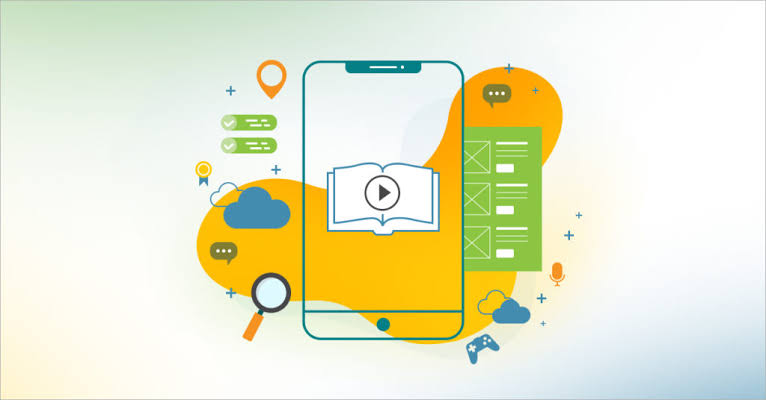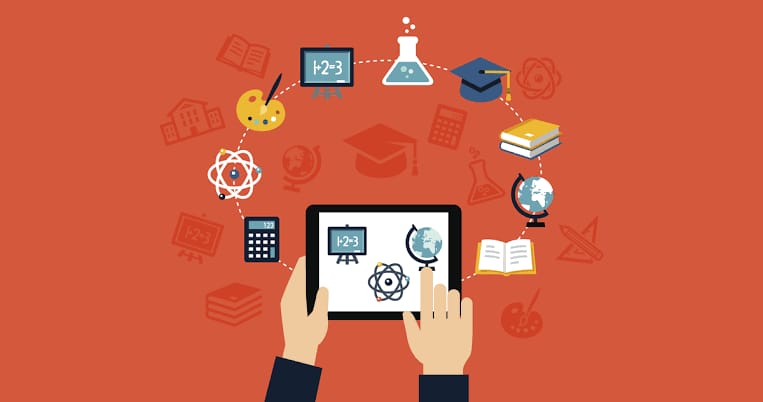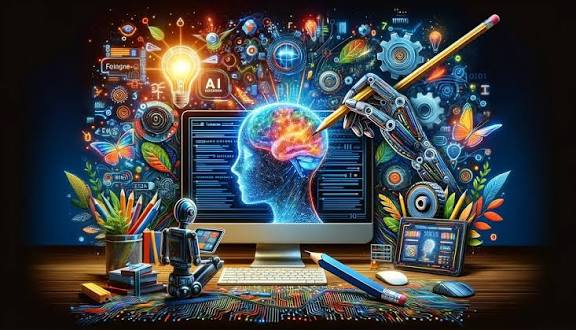
From Luxury to Necessity: How Technology Became Our Daily Lifeline
Technology has rapidly shifted from being a luxury item to an indispensable part of daily life. Today, we rely on it for communication, education, healthcare, work, and even simple tasks like shopping and organizing schedules. With innovations in AI, automation, and connectivity, our routines have become faster and more efficient. However, this dependence also raises concerns about mental health, privacy, and digital overuse. Despite these risks, technology continues to evolve, shaping a future
✨ Raghav Jain

Introduction
Not long ago, technology was viewed as a luxury—something convenient but not essential. It existed mainly in offices, high-end homes, and niche markets, serving only those who could afford it. Fast forward to today, and it's hard to imagine life without it. From smartphones and smartwatches to digital payments and AI-powered apps, technology has integrated itself into nearly every aspect of our lives. What was once optional is now indispensable.
This shift has transformed how we communicate, work, shop, learn, and even manage our health. In this article, we’ll explore the evolution of technology from a luxury item to a daily necessity, the reasons behind this transformation, and how it continues to shape our modern existence. From luxury to necessity, the evolution of technology in our lives has been nothing short of transformative, weaving itself seamlessly into the very fabric of our daily existence. There was a time when owning a mobile phone, accessing the internet, or having a computer at home was considered a privilege, a marker of affluence and advanced living. These tools were limited to a select few and primarily used for professional or educational purposes. Fast forward to today, and these once-luxurious items have become indispensable to the average individual’s routine, regardless of age, occupation, or location. The smartphone, a pocket-sized marvel, now functions as an alarm clock, a communication hub, a camera, a navigation tool, a mini-computer, and even a personal assistant. It is rare to find someone not clutching their phone within arm’s reach, using it to connect with loved ones, scroll through social media, check the news, shop online, or manage their daily tasks. The internet, which once required dial-up connections and patience, has morphed into a high-speed gateway to knowledge, entertainment, business, and social interaction, available with just a few taps or voice commands. Whether it’s attending virtual classes, working remotely, streaming our favorite shows, or ordering groceries, digital connectivity has reshaped our expectations and lifestyles. The integration of technology has further expanded with smart home devices, wearable gadgets, and AI-powered services, making automation a norm rather than a novelty. Voice-controlled assistants can now dim the lights, play a song, or give us weather updates, while fitness bands monitor our health in real-time and alert us to potential medical concerns. In industries like healthcare, education, finance, and agriculture, technology has revolutionized operations, improving efficiency, accessibility, and accuracy. Doctors consult patients over video calls, students attend global lectures from their bedrooms, farmers use drones to monitor crops, and banking can be done with a few clicks on a mobile app. The pandemic accelerated this shift, turning virtual interactions into necessities overnight and showing how deeply reliant we are on digital tools to maintain continuity in our professional and personal lives. Social behavior, too, has adapted around technology; friendships are often nurtured through texting and video chats rather than physical meet-ups, dating happens through swipes and algorithms, and communities thrive in digital forums. However, this dependence isn’t without consequences. Concerns about screen time, data privacy, mental health, and digital fatigue are becoming more prominent. Despite this, the convenience, speed, and breadth of opportunities offered by technology continue to outweigh its drawbacks for most people. What was once seen as a luxury that offered optional enhancements to life is now a lifeline, enabling us to function, grow, and stay connected in an increasingly complex world. The boundary between the digital and the real is blurring, and in this hybrid reality, technology is not just a tool—it’s a fundamental layer of modern life. From children learning through interactive apps to elders video-calling their families across continents, the reach and impact of technology span generations. It empowers creativity through platforms for content creation, supports entrepreneurship with e-commerce tools, and amplifies voices through social media activism. Even the simplest daily activities, like checking the time, setting reminders, or calculating expenses, are now done with digital assistance. We rely on GPS for directions, cloud storage for memory, and AI recommendations for decision-making, illustrating how embedded these systems have become. Businesses, too, operate with tech at their core—from digital marketing to virtual customer service, supply chain automation, and data analytics. Job roles and career paths have emerged that were unimaginable a decade ago, such as app developers, digital strategists, and AI ethicists, pointing to how technology has reshaped the professional landscape. Education no longer needs a classroom, as learners can access knowledge from anywhere, often tailored to their individual pace and preference through adaptive learning platforms. Healthcare delivery is becoming more proactive and personalized thanks to telemedicine, wearable diagnostics, and AI-assisted treatments. Even in entertainment, the shift is obvious—traditional cinemas compete with on-demand streaming platforms, and live performances are streamed globally to reach wider audiences. Yet, the most profound shift may be internal—how we think, learn, and relate to the world around us. Our attention spans have shortened, our need for instant gratification has grown, and our brains are continuously adapting to multitask and process fragmented information. This digital immersion influences everything from memory retention to social interaction styles, creating a new psychological framework shaped by screens and connectivity. Our reliance on technology has made us more efficient but also more distracted, more connected but often more isolated. Still, the balance we strike between utility and overuse, empowerment and dependence, is what defines our relationship with the digital age. The shift from luxury to necessity isn’t just about gadgets and apps—it’s about a change in mindset and lifestyle, where being offline can sometimes feel like being left out of the world. Technology has transcended its original role to become a companion, a co-pilot, and sometimes even a mirror reflecting our evolving needs, aspirations, and values. As innovation continues to accelerate, with advancements in artificial intelligence, quantum computing, and biotechnology on the horizon, the trajectory suggests an even deeper integration into human life. In this unfolding future, the challenge will not be about access but about balance, ethics, and meaningful engagement. Thus, what started as an occasional indulgence has become a critical infrastructure of daily living—technology is no longer just an option; it is an essential, ever-present part of who we are and how we live.
The Evolution: From Novelty to Norm
Technology's journey began as a fascinating invention—radio, television, early computers—used mainly by the privileged. In the 90s, having a desktop computer at home was impressive; owning a mobile phone was rare. But with the internet boom and the smartphone revolution, everything changed.
Key Milestones in the Tech Shift
- 1990s – Introduction of personal computers in homes and offices
- 2000s – Internet becomes accessible; mobile phones gain popularity
- 2010s – Smartphones, cloud computing, and social media rise
- 2020s – Smart tech, remote work, AI, and IoT redefine daily living
Today, even essential services—education, banking, healthcare—rely heavily on tech. The COVID-19 pandemic only accelerated this dependency, turning remote work, virtual meetings, and online schooling into everyday norms.
Communication: Bridging Distances Instantly
One of the most profound ways technology has become a lifeline is through communication. Long gone are the days of handwritten letters or waiting days for replies.
Modern Communication Tools
- Messaging apps like WhatsApp, Telegram, and Signal
- Video conferencing platforms like Zoom and Google Meet
- Social media networks like Instagram, Facebook, and X (formerly Twitter)
These tools allow us to stay connected with loved ones, conduct business meetings, and share moments in real-time—even from across the world.
Benefits
- Builds stronger global and personal connections
- Enables remote collaboration and support
- Offers instant access to information and news
Health & Wellness: Digital Support for a Healthier Life
From fitness trackers to telemedicine, technology now plays a critical role in managing physical and mental well-being.
Tech in Healthcare
- Wearables (like smartwatches) track heart rate, sleep, and activity
- Telehealth services connect patients with doctors online
- Mental wellness apps offer guided meditations, therapy sessions, and mood tracking
During lockdowns, many people turned to health apps and virtual consultations, highlighting how essential tech has become for health support.
Benefits
- Encourages preventive healthcare and fitness
- Makes medical advice more accessible
- Supports mental health with real-time solutions
Work and Productivity: Redefining the Workplace
Technology has fundamentally reshaped how and where we work. Remote work, once considered a perk, is now a standard for many industries.
Tools That Make It Possible
- Project management platforms like Trello, Asana, and Notion
- Cloud storage and collaboration via Google Workspace and Microsoft 365
- Time-tracking and productivity apps for better focus and efficiency
Many businesses now operate with distributed teams across time zones, thanks to seamless digital tools.
Benefits
- Offers work-life balance and flexibility
- Expands job opportunities across borders
- Boosts productivity with automation and real-time updates
Education: From Blackboard to Broadband
Education has experienced a digital transformation, turning classrooms into global learning hubs.
EdTech Innovations
- Online learning platforms like Coursera, Khan Academy, and Udemy
- Virtual classrooms powered by Zoom, Google Meet, or Microsoft Teams
- Learning management systems (LMS) that track progress and deliver content
Even students in remote areas can now access world-class education with just a device and internet connection.
Benefits
- Democratizes learning and skill-building
- Makes education more flexible and personalized
- Bridges the gap between urban and rural education
Finance: A Tap Away from Transactions
Financial technology (FinTech) has taken banking from brick-and-mortar to mobile apps, allowing people to manage money, make payments, and invest without stepping outside.
Everyday Tech in Finance
- UPI and mobile wallets like Google Pay, Paytm, and PhonePe
- Online banking and investing apps like Zerodha, Groww, and Robinhood
- AI chatbots for customer service and financial advice
Financial inclusion has grown, giving more people access to digital banking, credit, and savings tools.
Benefits
- Simplifies transactions and savings
- Reduces dependency on cash
- Provides tools for financial planning and literacy
Shopping and Lifestyle: Convenience at Your Fingertips
E-commerce and lifestyle apps have revolutionized how we shop, travel, and even eat.
Tech-Enabled Lifestyle Tools
- Online marketplaces like Amazon, Flipkart, and Nykaa
- Food delivery platforms like Zomato and Swiggy
- Ride-sharing and travel apps like Uber and MakeMyTrip
Personalized suggestions, quick delivery, and digital payments make everyday life smoother and more enjoyable.
Benefits
- Saves time and offers a wide variety
- Enhances comfort with doorstep services
- Allows comparison and informed decisions
Security and Smart Living: Safety Meets Innovation
Smart home devices and digital security tools help us protect our spaces, loved ones, and data.
Examples of Smart Security
- CCTV and smart locks controlled via mobile
- Voice assistants like Alexa or Google Assistant
- Cybersecurity tools like two-factor authentication and antivirus software
With rising cyber threats and physical safety concerns, technology acts as both a guard and a guide.
Benefits
- Enhances safety at home and online
- Offers control and customization
- Reduces risks and improves emergency response
The Emotional Impact: Connection vs. Dependency
While technology offers countless benefits, it also brings challenges like over-dependence, digital fatigue, and reduced human interaction.
Addressing the Drawbacks
- Practice digital detoxes regularly
- Use tech mindfully—set screen-time limits
- Stay connected offline through hobbies and relationships
Finding a balance is key—tech should serve us, not control us.
Conclusion
What began as a luxury has now become a lifeline. Technology is no longer an accessory—it is the foundation of modern life. From how we connect, work, learn, heal, and shop, it supports almost every facet of our daily routine. While we must be mindful of its overuse, there’s no denying the empowering role it plays in our lives.
As innovation continues, technology will only deepen its roots in our world. The challenge ahead is not just to keep up, but to use it wisely—enhancing our lives without compromising our well-being. Embrace the tools of today, stay curious about tomorrow, and remember: it’s not about the tech—it’s about what we do with it.
Q&A Section
1. How has technology evolved from being a luxury to becoming a daily necessity?
Ans:- In the past, technology was considered a luxury, used only by the elite for convenience. Over the years, with advancements and affordability, it became more accessible. Today, from communication to education and healthcare, technology is integrated into every part of life, making it essential rather than optional.
2. Why do we rely so heavily on smartphones and the internet today?
Ans:- Smartphones and the internet connect us to work, education, entertainment, and social life. They offer instant access to information, online shopping, digital payments, and communication, making daily tasks smoother and faster.
3. What role does technology play in education today?
Ans:- Technology has revolutionized education by enabling online learning, digital classrooms, interactive tools, and access to global knowledge resources. It allows flexibility and remote learning, especially useful during emergencies like the COVID-19 pandemic.
4. How has technology transformed healthcare?
Ans:- From online consultations to wearable health monitors and advanced diagnostic tools, technology has made healthcare more accessible, accurate, and efficient. It also supports telemedicine and electronic health records.
5. In what ways has technology influenced our daily communication?
Ans:- Technology has changed communication through apps like WhatsApp, video calls, emails, and social media. It helps us stay in touch instantly across long distances, enhancing both personal and professional relationships.
6. What impact has technology had on the job market and employment?
Ans:- Technology has created new jobs in sectors like IT, digital marketing, and app development, while also automating repetitive tasks. It demands continuous learning and adaptation of digital skills in most professions.
7. How has artificial intelligence and automation entered our daily lives?
Ans:- AI and automation are now part of smart homes, virtual assistants (like Alexa), chatbots, and even online shopping recommendations. They simplify tasks, enhance user experience, and boost productivity.
8. What are the risks of becoming overly dependent on technology?
Ans:- Over-dependence can lead to issues like reduced face-to-face interactions, digital addiction, data privacy risks, and job displacement due to automation. It’s important to balance tech use with mindful habits.
9. How does technology help in managing daily tasks and routines?
Ans:- From reminders and alarms to digital calendars and smart home devices, technology streamlines our routines, saves time, and increases efficiency in personal and professional lives.
10. What does the future of technology look like in everyday life?
Ans:- The future points toward more integration with wearable tech, smart cities, AI-powered devices, and virtual realities. Technology will continue to evolve, making life more connected, efficient, and personalized.
Similar Articles
Find more relatable content in similar Articles

Smart Study to Smart Career: ..
Smart study and career apps a.. Read More

From Classroom to Career: App..
Skill-building apps help stud.. Read More

Top Educational Apps That Boos..
Educational apps are transfor.. Read More

The Future of Social Media Ma..
AI is transforming social med.. Read More
Explore Other Categories
Explore many different categories of articles ranging from Gadgets to Security
Smart Devices, Gear & Innovations
Discover in-depth reviews, hands-on experiences, and expert insights on the newest gadgets—from smartphones to smartwatches, headphones, wearables, and everything in between. Stay ahead with the latest in tech gear
Apps That Power Your World
Explore essential mobile and desktop applications across all platforms. From productivity boosters to creative tools, we cover updates, recommendations, and how-tos to make your digital life easier and more efficient.
Tomorrow's Technology, Today's Insights
Dive into the world of emerging technologies, AI breakthroughs, space tech, robotics, and innovations shaping the future. Stay informed on what's next in the evolution of science and technology.
Protecting You in a Digital Age
Learn how to secure your data, protect your privacy, and understand the latest in online threats. We break down complex cybersecurity topics into practical advice for everyday users and professionals alike.
© 2025 Copyrights by rTechnology. All Rights Reserved.